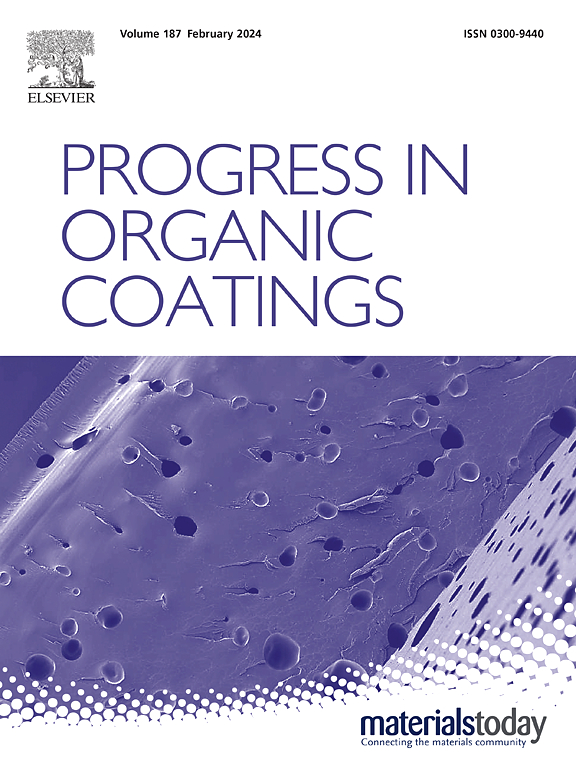Synergistic effect of substrate heating and coupling agent on electrosprayed superhydrophobic coatings
IF 7.3
2区 材料科学
Q1 CHEMISTRY, APPLIED
引用次数: 0
Abstract
Electrospraying is an attractive technique for fabricating multifunctional superhydrophobic coatings; however, limited durability impedes their practical use. To overcome this limitation, we propose coupling substrate heating with silane coupling agent (KH550) modification in poly(vinylidene fluoride)/carbon black (PVDF/CB) slurry. Results demonstrate that the coatings fabricated from PVDF/150 wt% CB slurry containing 1 wt% KH550 and deposited at 100 °C (Sample-DM) exhibit optimal superhydrophobicity, mechanical/chemical durability, self-cleaning capability, and oil/water separation efficacy compared to the counterparts employing either strategy individually. This enhancement arises from synergistic mechanisms: (1) KH550 hydrolysis establishes covalent bonding with CB nanoparticles, PVDF chains, and the substrate; (2) in situ substrate heating concurrently optimizes hierarchical topography while strengthening interparticle cohesion and coating-substrate adhesion. This dual-functional approach provides a robust methodology for fabricating high-durability electrosprayed superhydrophobic surfaces, advancing their technological deployment.
基材加热和偶联剂对电喷涂超疏水涂层的协同效应
电喷涂是制备多功能超疏水涂层的一种极具吸引力的技术;然而,有限的耐用性阻碍了它们的实际应用。为了克服这一限制,我们提出了在聚偏氟乙烯/炭黑(PVDF/CB)浆料中偶联基板加热和硅烷偶联剂(KH550)改性。结果表明,由PVDF/ 150wt % CB浆料(含1wt % KH550)制成的涂层在100°C(样品- dm)下沉积,与单独使用任何一种策略的涂层相比,具有最佳的超疏水性,机械/化学耐久性,自清洁能力和油/水分离效果。这种增强来自于协同机制:(1)KH550水解与CB纳米颗粒、PVDF链和底物建立共价键;(2)衬底原位加热同时优化了分层形貌,增强了颗粒间的凝聚力和涂层与衬底的附着力。这种双重功能的方法为制造高耐久性的电喷涂超疏水表面提供了一种强大的方法,促进了它们的技术部署。
本文章由计算机程序翻译,如有差异,请以英文原文为准。
求助全文
约1分钟内获得全文
求助全文
来源期刊

Progress in Organic Coatings
工程技术-材料科学:膜
CiteScore
11.40
自引率
15.20%
发文量
577
审稿时长
48 days
期刊介绍:
The aim of this international journal is to analyse and publicise the progress and current state of knowledge in the field of organic coatings and related materials. The Editors and the Editorial Board members will solicit both review and research papers from academic and industrial scientists who are actively engaged in research and development or, in the case of review papers, have extensive experience in the subject to be reviewed. Unsolicited manuscripts will be accepted if they meet the journal''s requirements. The journal publishes papers dealing with such subjects as:
• Chemical, physical and technological properties of organic coatings and related materials
• Problems and methods of preparation, manufacture and application of these materials
• Performance, testing and analysis.
 求助内容:
求助内容: 应助结果提醒方式:
应助结果提醒方式:


